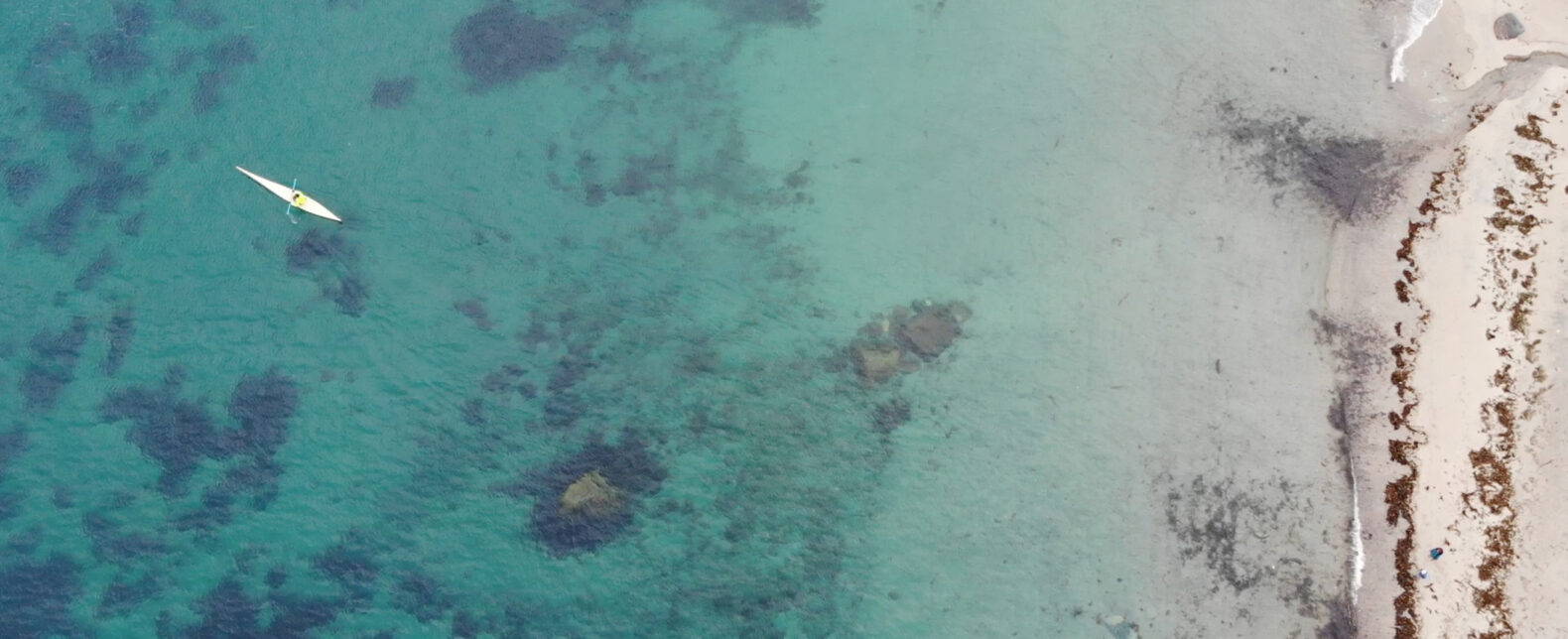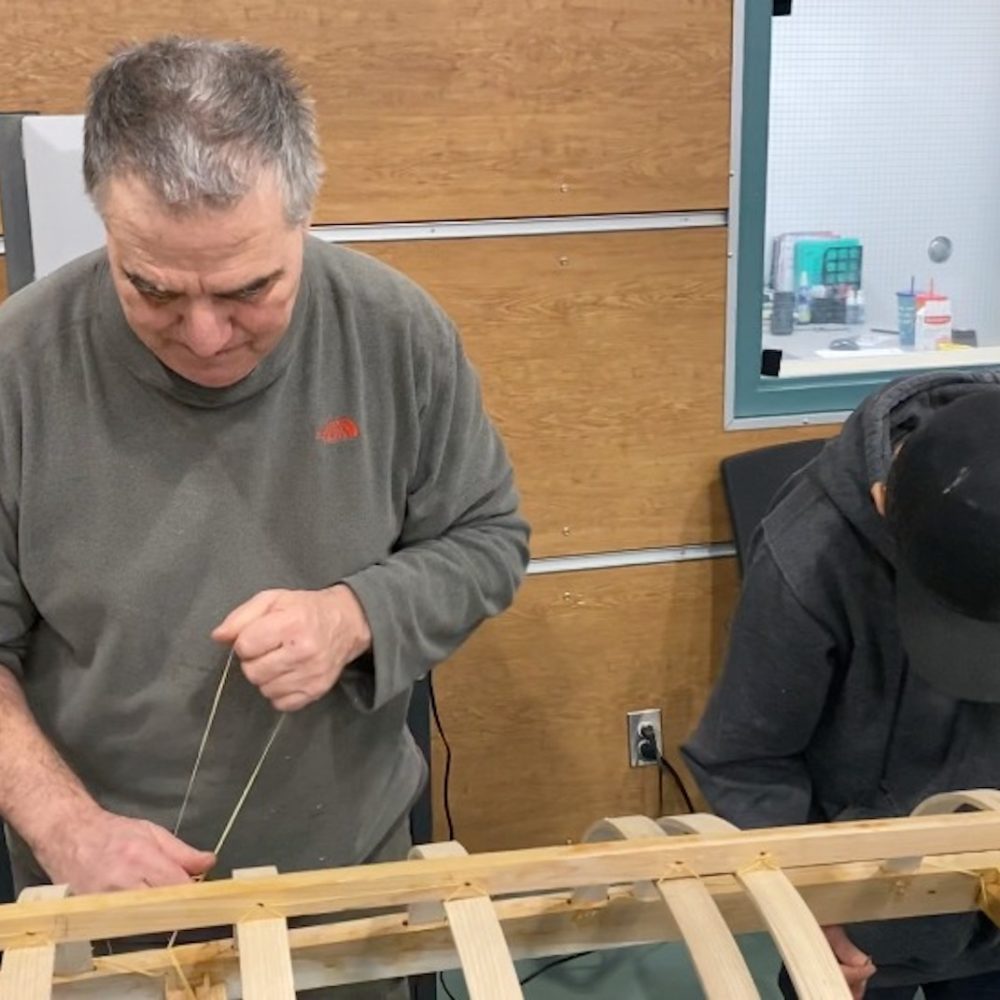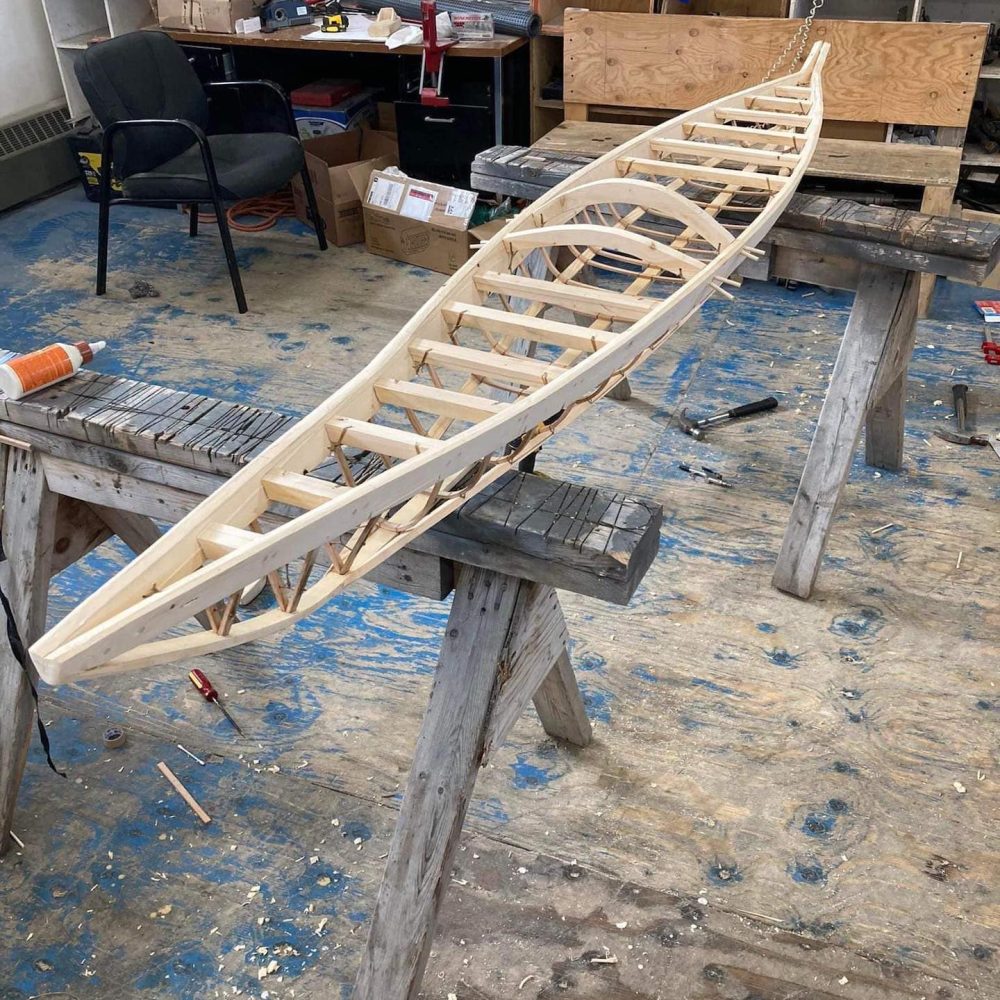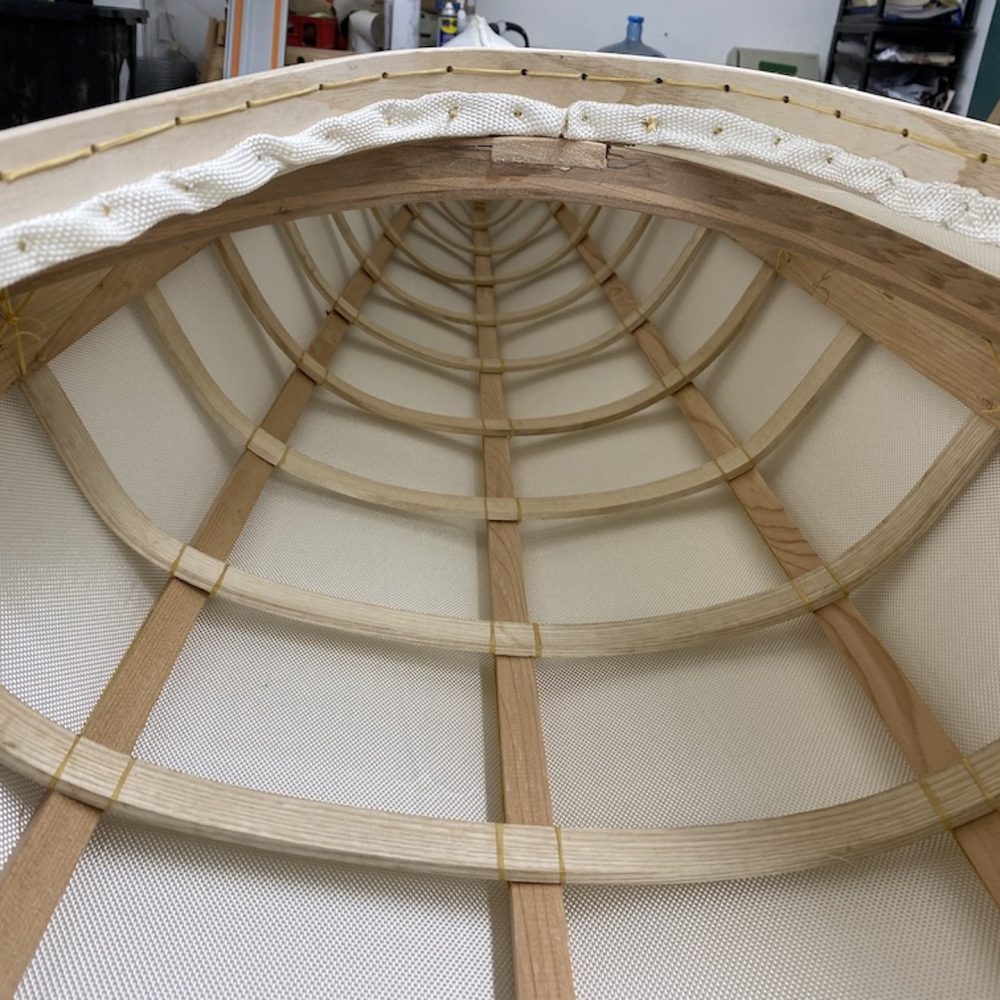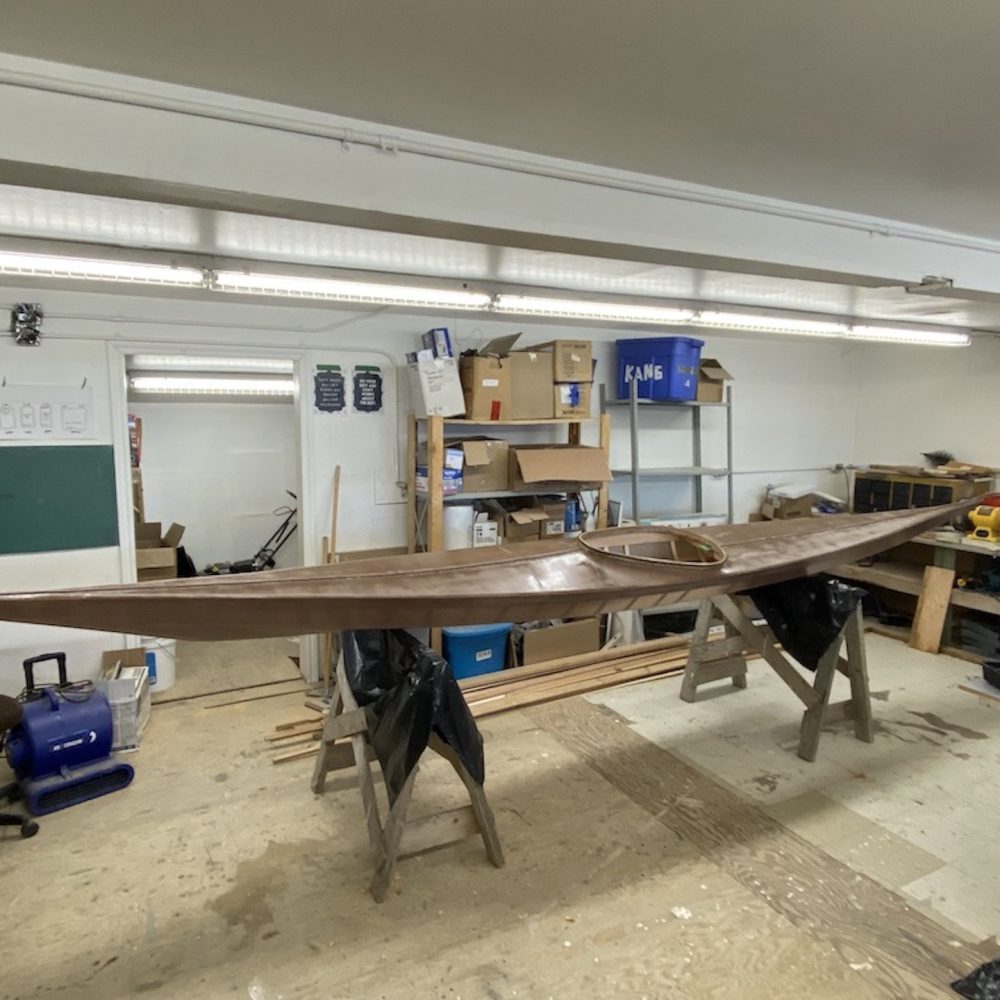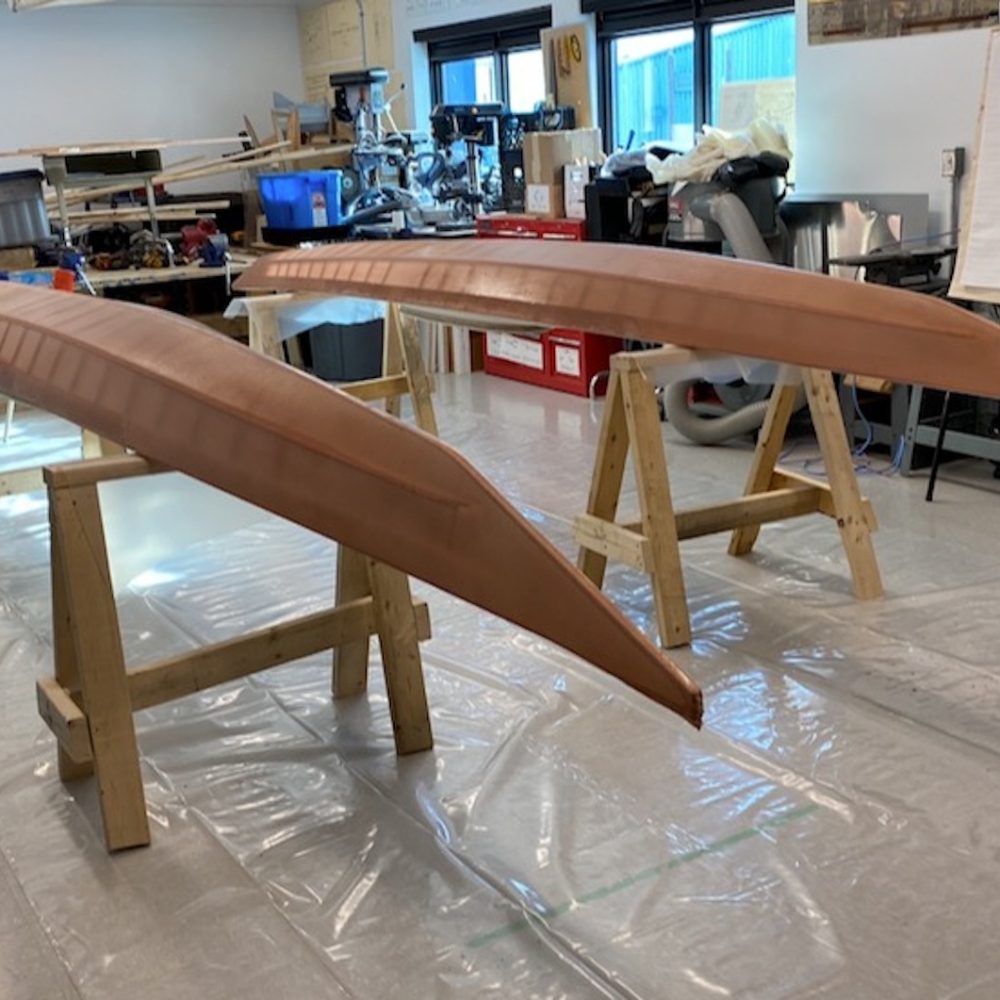Working towards cultural autonomy
Traditionally used for hunting, the use of qajait (kayaks) has virtually disappeared from contemporary Nunavik. Today, Thomassie Mangiok, Centre Director at Nuvviti School, is pushing to bring back the qajaq as a way for Inuit to connect with their roots and culture.
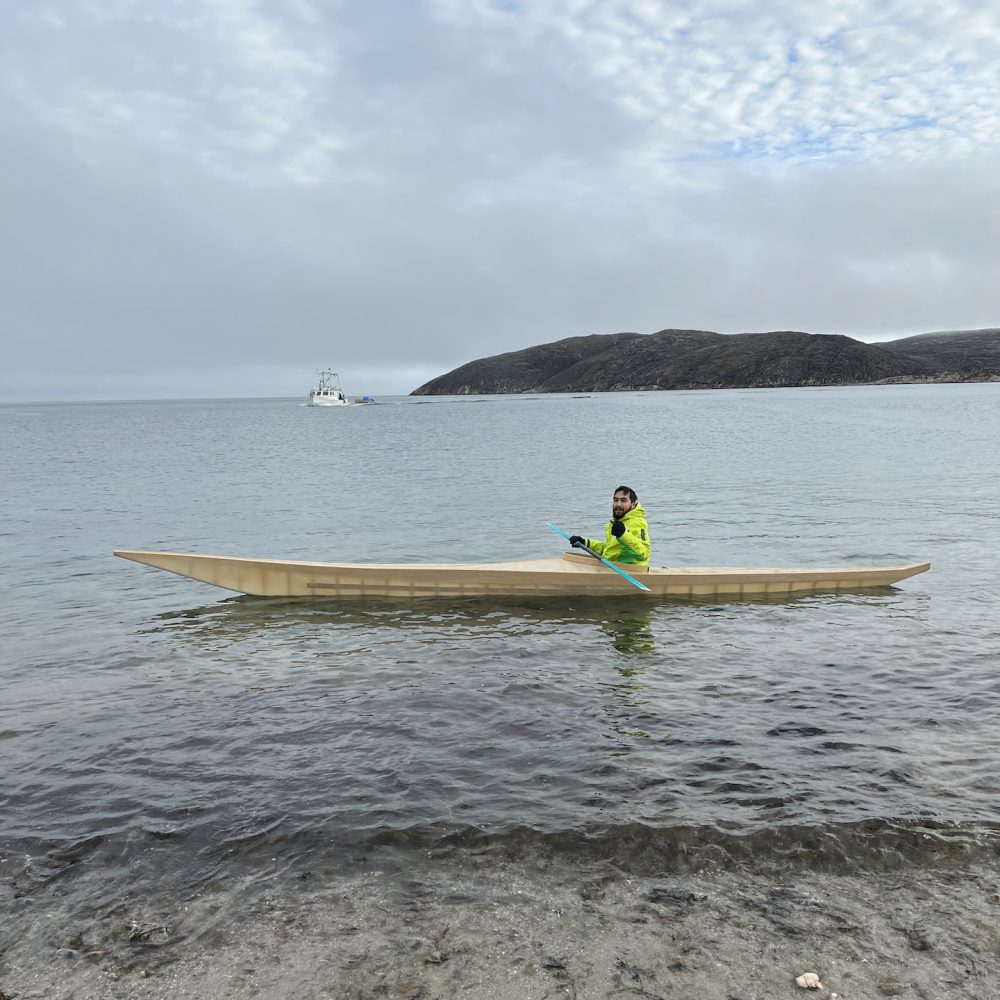
There has been more and more interest in regaining our culture. Qajaq is a part of that movement because qajaq is a part of us. When the students come to the culture class, it gives them an increased sense of success and validation of their identity. That they are good the way they are and don’t need to be anyone else: they are Inuit

The qajaq is a personal watercraft that was created by Inuit thousands of years ago as a tool to help hunters get closer to seals and whales. It traditionally consisted of a frame made from driftwood or whale bones covered by a sealskin exterior, with a small opening at the top to allow the qajaqers to sit comfortably and steer with a paddle. There are over 40 different types of traditional qajaqs specific to the environment in which they are used.
Across the world, the qajaq (more commonly known as a kayak) has garnered a massive following, with several competitive events held annually across the world including its own category in the summer Olympics. Despite this, the use of qajait has almost completely disappeared from Nunavik. One Ivujivimmiuq has been working hard to change that.
Thomassie Mangiok, Centre Director at Nuvviti School in Ivujivik, has been coordinating qajait-building workshops for the school’s culture class in recent years. Under the watchful eye of master builder and kayak enthusiast Alain Cloutier, through workshops across Nunavik students have completed several qajait. One was even purchased from Puvirnituq to be part of the permanent exhibit at the Canadian Canoe Museum, in Peterborough, Ontario.
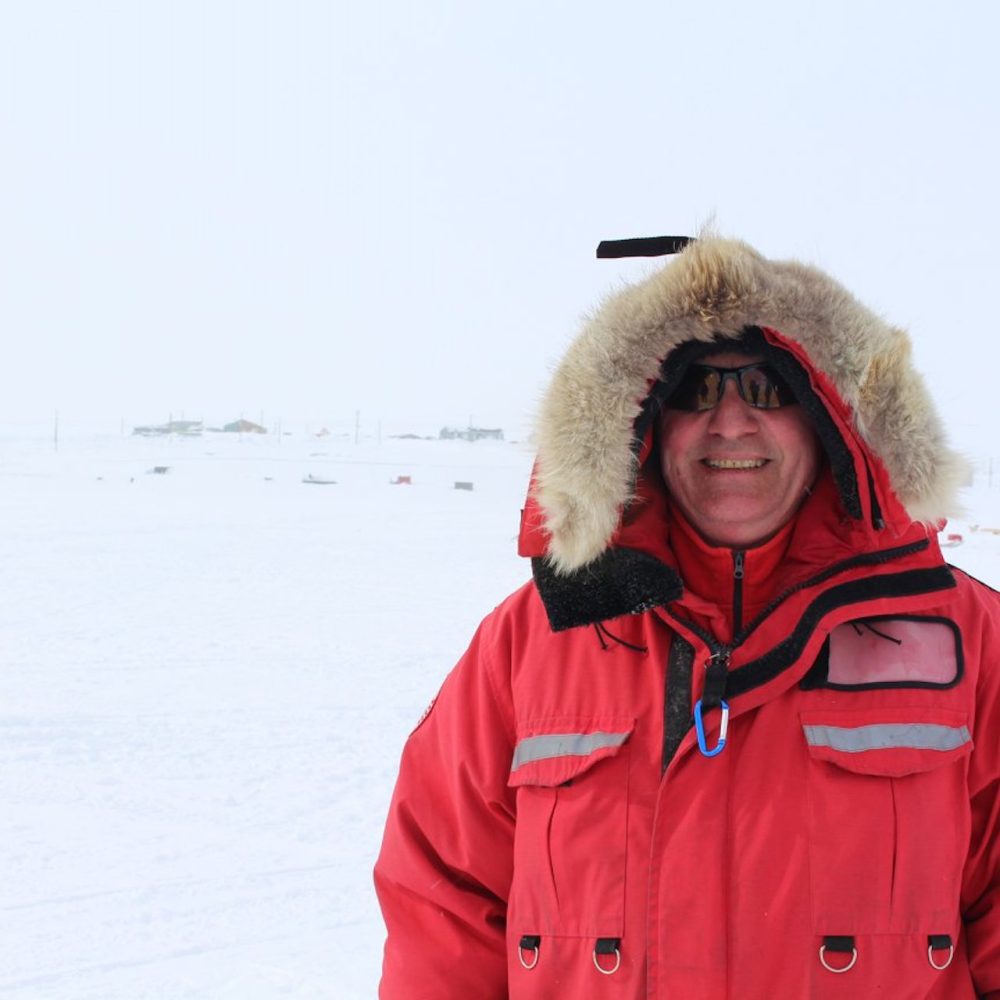
I don’t encourage students to take out the qajaq by themselves. There is a natural danger involved, so it has to be well controlled as an activity… going on the water is dangerous, above all in cold regions

For Thomassie, the workshops have a greater importance: “There has been more and more interest in regaining our culture. Qajaq is a part of that movement because qajaq is a part of us. When the students come to the culture class, it gives them an increased sense of success and validation of their identity. That they are good the way they are and don’t need to be anyone else; they are Inuit”.
Coordinating the workshops can be tricky. Most of the materials must be sourced and shipped from down south, but the effort is well worth it. Students learn a variety of skills such as teamwork and woodworking techniques that are comparable to a first-level cabinetry course. From start to finish, building a qajaq usually takes up to three weeks.
Getting the finished qajaq into the water is a little more complicated. There is a short window for learning qajaq due to weather limitations, and it can only be practiced in certain protected designated areas. Instructor Alain Cloutier explains “I don’t encourage students to take out the qajaq by themselves. There is a natural danger involved, so it has to be well controlled as an activity… going on the water is dangerous, above all in cold regions.”
One of the most important techniques qajaqers must know before leaving the practice zone is the qajaq roll. The qajaq roll is the ability to flip back upright in case the qajaqer tips over. This is crucial in the harsher climates of Nunavik, where tipping over can happen more often. Alain puts a heavy emphasis on personal safety while qajaqing: “I encourage people to practice for two or three years before venturing out on their own.”
What is next for qajaq and Nuvviti School? Thomassie has a dream: “It has always been in the back of my mind, to bring it back, to build qajait but [traditional] of Ivujivik…it depends on a few things but we are slowly gaining experience and space to have a place just for the qajait.” Despite the natural challenges that come from starting something from scratch, Thomassie is steadily working towards establishing a qajaqing school, complete with workshops, storage and qajaqing courses for the community.
We will keep you posted on any updates, but until then: happy and safe qajaqing!
